INTRODUCTION
TO ENGLAND AND THE CELTIC LANDS has been an adventure in music, culture and spirituality. Most of all, however, I assembled this book for two reasons: 1) because I am enthralled by the traditions of the British Isles and the Celtic lands, the music and dances of which have stood the test of time, and 2) because I believe that the joy and inspiration from dances of yore can continue to uplift us all — regardless of our ages, faiths or cultures of origin.
With over nine hundred tunes written over the past four decades, this book — in five volumes — represents a large part of my musical experience, from childhood to the present time, in the cultures of England, Ireland, Scotland, Wales, Cornwall, the Isle of Man, the Isle of Wight and Brittany, through many eras of music and dance. In my mother’s elementary school in New York City, I was introduced to English country dancing, Morris dancing and sword dancing by May Gadd and Phil Merrill — disciples of Cecil Sharp, who revived English folk music and dance and brought his vision of both genres to the United States in the early 20th Century. Around the same time, my parents introduced me and my brothers to their friend Carl Dolmetsch and his family; the Dolmetsches have long been known for their recorders, harpsichords and viols, as well as their fine musicianship. In addition, renowned lutenist Suzanne Bloch used to visit us to play and sing songs from the Elizabethan era, and that was a great inspiration as well. Furthermore, I remember going to medieval festivals in France, during which there were great outdoor performances of French medieval music in the context of re-enactments of life in the 13th and 14th centuries. For these reasons, my interest in early music began at quite a young age. Shortly thereafter, I also became acquainted with the Irish and Scottish forms of traditional dance.
It is, however, not just the music and dances of the Renaissance and baroque periods that have inspired me. At a certain point I became interested in the origins of the many dance forms of the British Isles, not solely out of curiosity but also because of many years of having studied the traditions of the Isles, particularly Druidry — an ancient spiritual practice in England and the Celtic lands, dating back thousands of years, which has now been revived and expanded in a beautiful way. The druids were the priests and guides of the ancient Celtic world. I began to connect the dots in the many dance forms of England and the Celtic lands, and found that there are many roots in the so-called pagan societies of the past. The Maypole, for example, has its origins in the Celtic festival of Beltane, one of eight festivals still honored today — four of which are represented in this book. The longways dance goes back hundreds, if not thousands, of years — the only differences being the styles of music as well as the dance steps that have succeeded one another over the centuries. Circle dances exist in almost every culture on Earth and are even more ancient. If one goes back far enough, the origin of many of these dances probably dates back before recorded history. For this reason, I have included some tunes that — in their character and intent — reach far back in time, for the purpose of celebrating our cultural connections over the centuries — not just with the cultures of England and the Celtic lands, but throughout many other parts of the world as well. The vast majority of the tunes in this book, however, are centered around the European dance traditions of the 16th, 17th and 18th centuries.
In writing this music, I have done my best to capture the cultural identity of England and the Celtic lands. Brittany is included not only because of its Celtic origins, but also because it became part of France, and is therefore connected to the long-standing French influence on British culture — which began in the eleventh century with the Norman invasion and the crowning of William the Conqueror as king of England. Although there are a great many English country dance tunes in this book (hence two volumes for this section), there are also cultural overlaps with Ireland, Scotland, Wales and Brittany. The jig section, for example, represents all of those lands. A few tunes also reflect German culture, as a large part of the British royal family’s heritage is from Germany. The reels, rants and hornpipes, collected in their own section, are essential parts of the dance cultures of the Isles, but also form a historical connection with American culture — much of which was transplanted from the Isles. The strathspeys in the Scottish section of this book are the first I have written and, along with the other tunes in that section, constitute my respectful attempt to represent Scottish culture. There is no specific section for Ireland, as Irish influence is strong throughout the jigs, slip jigs and reels (in Volumes IV and V) — as evidenced, for example, by key Irish place names being mentioned in many of the titles. Likewise, Brittany and Wales do not have their own sections, but are represented in various areas of the book. In addition, there are appropriate nods to Canada and Australia, as they are culturally related to the Isles, as well as to the United States — in which English, Irish and Scottish dancing have achieved such great popularity.
I have also included a section of introductory tunes — ceremonial and processional pieces — because such music may be called for at dances or other forms of gathering. There is also a section of tunes intended to be played at the intermission of a formal dance, or as background music at any formal occasion. Of course, any of these tunes may be choreographed as well, if so desired.
At the end of the last volume, there is a Postlude section with tunes honouring the flags of England, Ireland, Scotland, Wales and Brittany, as well as other celebratory tunes. In addition, I have included a number of songs and hymns for general inspiration and entertainment.
Throughout this book, there are many titles referring to beautiful places in the Isles — not only to call attention to the high points for travelers but to express my admiration for the beauty and elegance in that part of the world. Equally important are references to various aspects of culture and life in the Isles, including several professions — carpenters, chefs, doctors, gardeners, miners, musicians, postmen, and others. There are many references to royalty as well.
Finally, I have included many tunes about nature itself — rivers, lakes, oceans, trees, plants, herbs and flowers — as well as animals and birds, along with the seasons of the year. Indeed, music and dance are closely entwined with life in all its forms — in England, in the lands of the Celts, and beyond. In this light, it is my intention that every tune in this book carry a spirit of inclusiveness, respect, and universal joy — now and forever.
May the dance begin!
Roger Davidson
June, 2022
Fresh material for choreographers
To England and the Celtic Lands: Music for Dancing and Celebration, by Roger Davidson. In 5 volumes: (1) ‘Introductory tunes, marches and music for interludes and entertainment’, (2) ‘English country dance tunes in 2, 4, 6/8 and 3/4’, (3) ‘English country dance tunes in 3/2 (hornpipes)’, (4) ‘Jigs and slip jigs’, (5) ‘Reels, rants and hornpipes, Scottish tunes, and a Postlude to all five volumes’. Musica Universalis Publishing (2022).
These five volumes, as their titles suggest, comprise tunes for traditional dances from the islands of Britain and Ireland. But this is not an anthology of existing tunes; the American composer and pianist Roger Davidson has composed them all – more than 900 in total – and in doing so he enriches the traditions he has followed. The tunes that I’ve sampled are strong and seem admirably suited for dancing. What’s more, they’re underpinned with effective harmonies, indicated by chord symbols. An acid test for a good tune is that it lingers in the mind and that’s certainly the case here; ‘earworms’ now, many of the tunes would have deserved the epithet ‘maggot’ if they had been written 300 years ago. Historical Dance Society choreographers looking for fresh material will probably be most interested in volumes 2 and 3 of the collection, where they will discover a cornucopia of 285 melodies, encompassing English country dances in a range of metres, including hornpipes in 3/2 and a few Morris dances.
The composer’s website, https://rogerdavidsonmusic.com, reveals broad musical interests, while his background includes connections with the early days of the Historical Dance Society: ‘I grew up knowing Carl Dolmetsch and his children, and playing the recorder with Carl and Joseph Saxby. That’s when I learned to play “Newcastle” on my soprano recorder about 8 years old, among other tunes.’
Davidson may be contacted at lightcircle1@yahoo.com.
Jeremy Barlow
For the Historical Dance Society (U.K.)
The Five Books
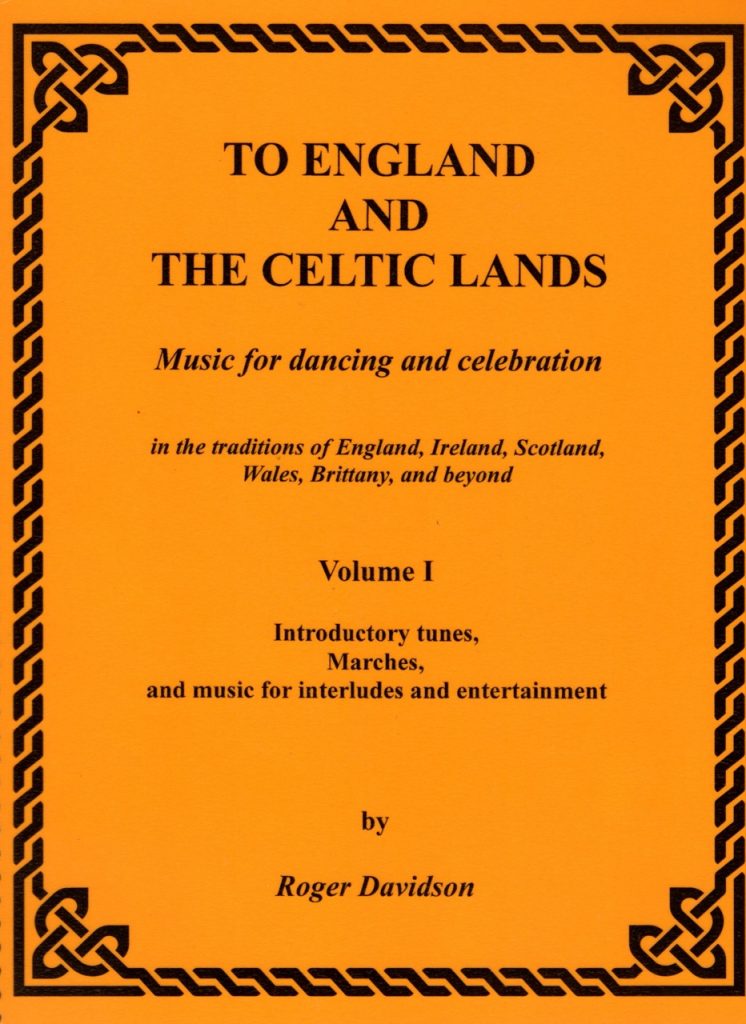
Volume I
| ALE AND WINE | |
| BEE BALM | |
| BRITISH GLEE | |
| BY STAR AND STONE | |
| CORIANDER | |
| DOWLAND’S JOY | |
| IRELAND IN THE SUN | |
| MAY THE DANCE BEGIN | |
| SCOTLAND FOREVER | |
| TO THE ISLES | |
| THE YOUTHFUL KNIGHT |
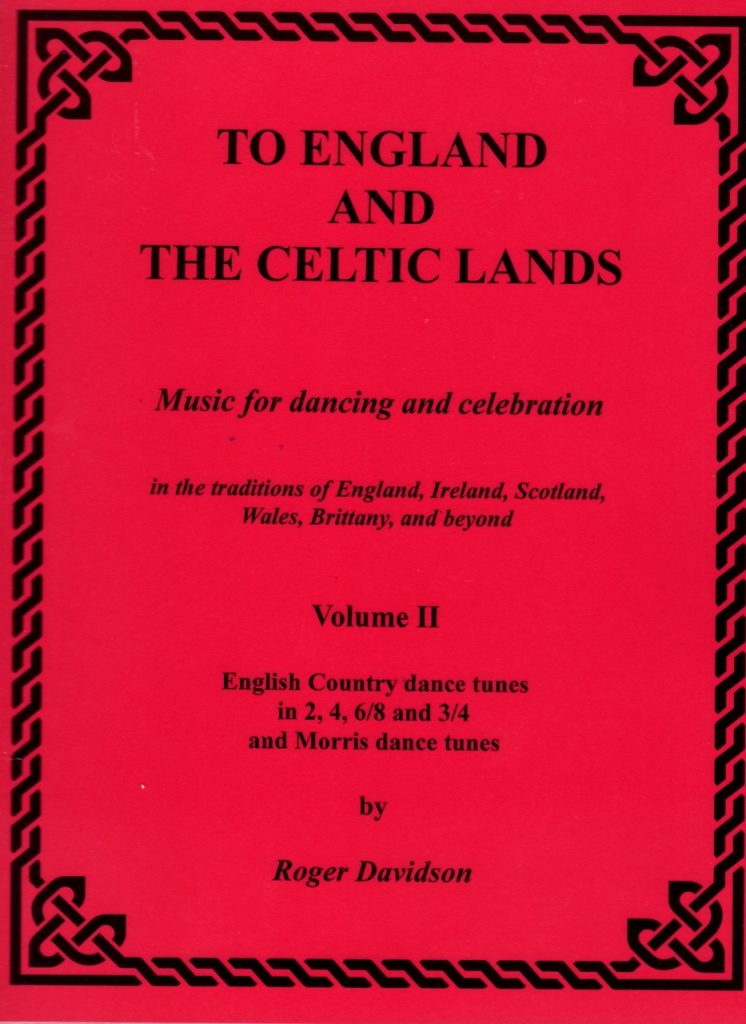
Volume II
| A FRENCHMAN IN LONDON | |
| A STROLL IN MAYFAIR (Dance: “The Diamond of Antwerp” by Paul Ross) | |
| A TRIP AROUND THE LAKE | |
| ABOVE THE FRAY | |
| AN ENGLISHMAN IN PARIS | |
| BEND IN THE RIVER | |
| CIRCLE ROUND THE TREE (Dance: “Family Week” by Sharon Green) | |
| CONTINENTAL GRACE (Dance: TBD, by Gary Roodman) | |
| DRUID’S GRACE | |
| ELIXIR OF JOY | |
| GEMSTONES | |
| GRACE OF A LADY | |
| GREEN FIELDS | |
| JAMS AND SCONES (Dance: TBD, by Gary Roodman) | |
| MIDLANDS JAUNT | |
| ON THE ROAD TO DEVON | |
| PETER RABBIT | |
| RAIN OR SUN | |
| ROBIN HOOD’S BAY | |
| ST. JAMES PARK (Dance: “Politesse” by Orly Krasner) | |
| THE SALMON | |
| SURREY FARMS | |
| TALIESIN’S TALE | |
| UPON THE PASTURE GREEN (Dance: “Étude for Eight” by Orly Krasner, paired with “Strangford Lough” in Volume IV) | |
| WALLS OF YORE (Dance: TBD, by Sharon Green) | |
| WHITBY PARK (Dance: TBD, by Graham Christian) | |
| WOOLS OF FRANCE |
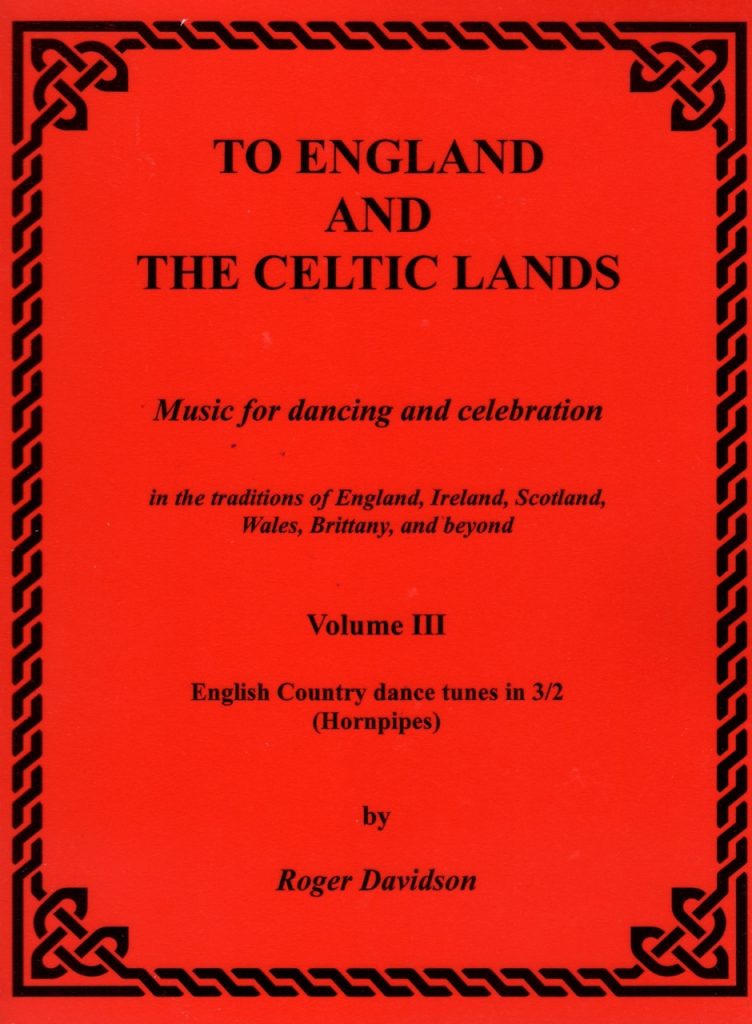
Volume III
| ARCHES OF BRITAIN | |
| AUTUMN FRIDAY (Dance: “Etloe” by Sharon Green) | |
| COTILLION HORNPIPE | |
| CUMBRIAN HILLS | |
| MANOR ON THE HILL | |
| MORNING IN THE VILLAGE (Dance: TBD, by Orly Krasner) | |
| ODE TO THE NORTH SEA | |
| PICCADILLY | |
| ROAD TO THE EAST (Dance: TBD, by Graham Christian) | |
| SAILING ON THE SEVERN (Dance: “The Inner Circle” by Paul Ross) | |
| SOUL OF ENGLAND | |
| SWINLEY FOREST | |
| TO MY FATHER | |
| TO MY MOTHER | |
| TREES OF TWICKENHAM (Dance: TBD, by Paul Ross) | |
| THE VISCOUNT | |
| WESTMINSTER BRIDGE (Dance: TBD, by Sharon Green) | |
| THE WILD DOVE | |
| THE WOODS OF FARNHAM (Dance: TBD, by Orly Krasner) | |
| ZEPHYRS IN THE SUN | |
| ZINNIAS IN BLOOM (Dance: “Dancing on Air” by Paul Ross) |
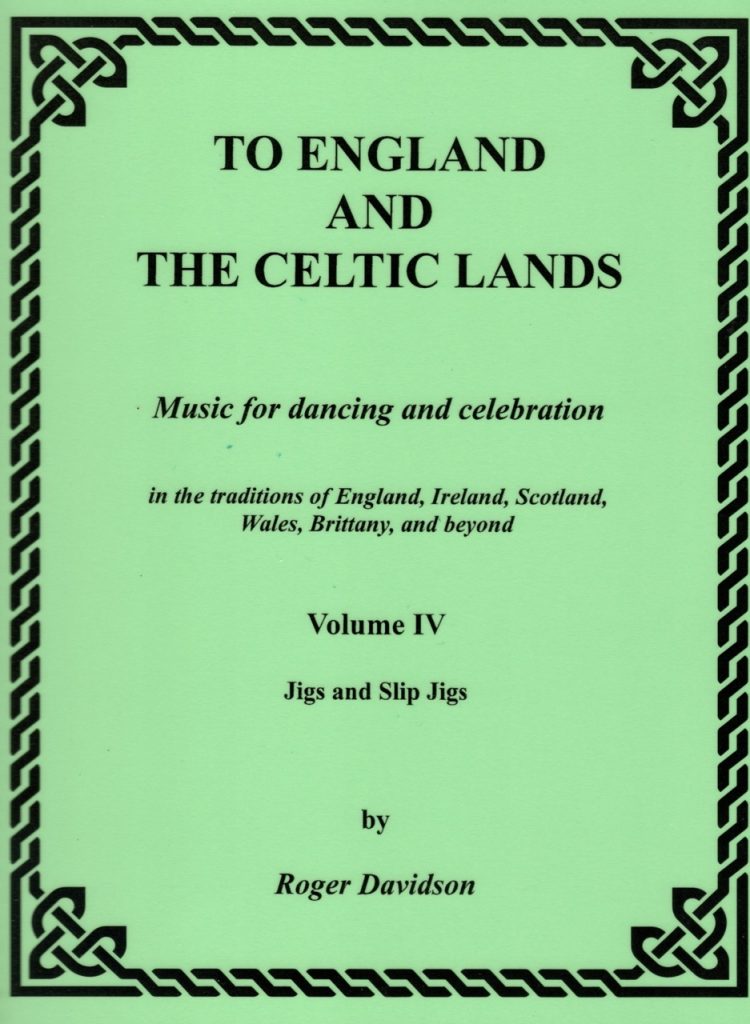
Volume IV
| AFTERNOON JIG | |
| CELTIC FIRE | |
| GIGUE DE CALAIS | |
| THE GRACEFUL HORSE | |
| INNISFREE JIG (Dance: “Transitions” by Orly Krasner) | |
| IRELAND FOREVER | |
| THE KNIGHT ERRANT | |
| THE KNIGHT’S ARMOUR | |
| LA JOIE DE LA COUR | |
| NOTTINGHAM TRAILS | |
| THE OLD BARREL | |
| QUEST FOR TRUTH | |
| ROAD TO KENMARE | |
| ROCKS OF DORSET | |
| THE SAILOR’S JIG | |
| THE SEEKER’S JIG | |
| SPIRIT OF THE FOREST | |
| STRANGFORD LOUGH (Dance: “Étude for Eight” by Orly Krasner, paired with “Upon the Pasture Green” in Volume II) | |
| THE WANDERING KNIGHT |
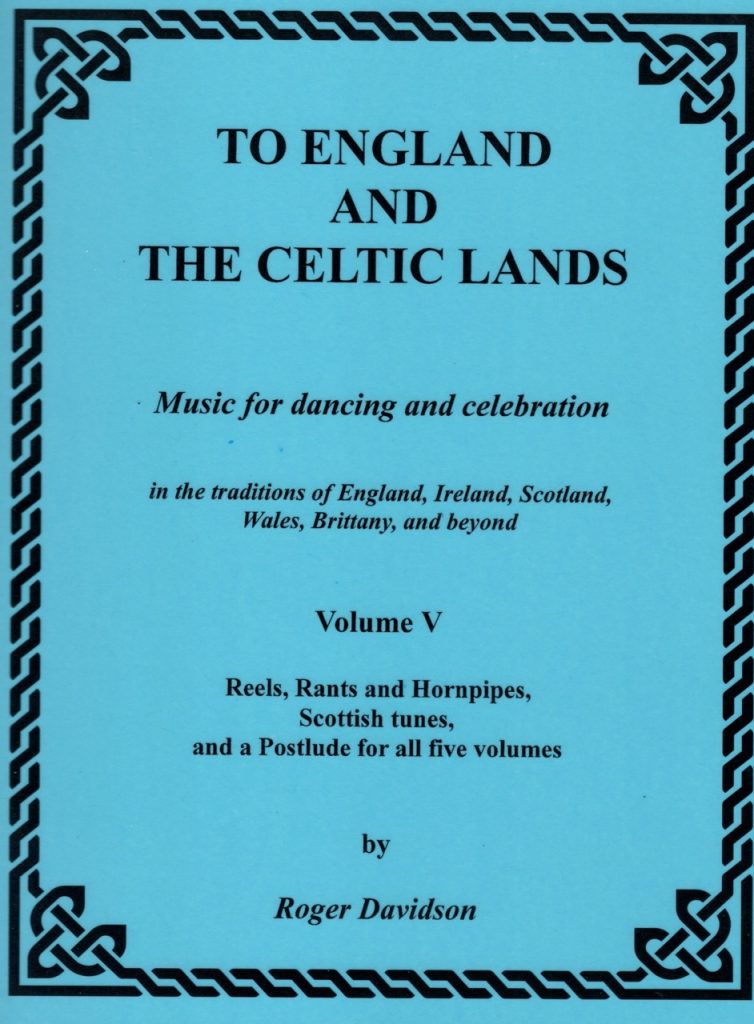
Volume V
| ARGYLL FOREST | |
| EDMUNDSTON REEL | |
| GREEN MEADOWS HOP | |
| ON THE WAY HOME | |
| REEL DES LAURENTIDES | |
| SHETLAND JIG | |
| SPEYSIDE JIG | |
| STRING BEAN REEL | |
| SPIRIT OF THE FOREST | |
| STONES OF CORK | |
| TALES OF THE NORTH | |
| WOODS OF MIRTH | |
| YTHANWELLS |
Reviews
The fruits of a lifetime immersed in the music and dance of many cultures, this extensive collection of original compositions will provide musicians, choreographers, dancers, teachers, and casual listeners inspiration and pleasure for years to come. We can all look forward to the integration of this monumental product of Roger’s inclusive and generous creativity into the worlds of dance and music that so bless and enrich our lives.
Gene Murrow, English country dance teacher and founder / Gotham Early Music Scene, New York City
Like a museum full of mini-masterpieces, Roger Davidson’s “To England and the Celtic Lands” will delight all who visit even some of its richly adorned musical galleries. The five-volume set — product of a rare, seemingly inexhaustible creativity — comprises an amazing number of extraordinary, original compositions. But unlike objects in a museum, these you can take home and, as musician or choreographer, make your own.
Paul Ross, English country dance teacher, New York City